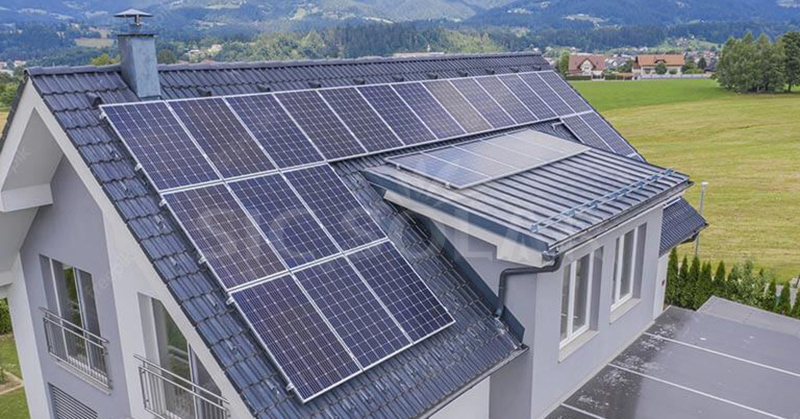Properly installing solar panels on your roof is essential to maximizing energy productivity. Factors such as the roof’s orientation, tilt angle, shading, and local climate can all affect the best location. Here’s a detailed look at what you need to consider when planning your solar panel installation location for optimal performance and efficiency.
1. Orientation: South-facing for Maximum Sunlight
In the Northern Hemisphere, south-facing roofs typically receive the most sunlight throughout the day and are ideal for solar panel installations. This orientation allows solar panels to capture maximum sunlight, which increases energy productivity. If your roof is not south-facing, east- and west-facing orientations can still be used, although they may capture less total sunlight. North-facing roofs typically receive the least direct sunlight and are generally not suitable for solar installations.
2. Tilt Angle: Finding the Optimal Angle
The tilt angle of a solar panel can also affect its efficiency. Ideally, the angle of the panels should match the latitude of your location to optimize sunlight exposure. For example, in an area with a latitude of 30 degrees, a 30-degree panel tilt helps maximize sunlight capture. In some areas, seasonally adjusting the tilt may further increase energy production, but this may require specialized mounting.
Fixed tilt angles may be more cost-effective, but companies such as SIC Solar offer adjustable tilt mounts that allow seasonal adjustment to improve efficiency, which is useful in areas where the angle of sunlight changes significantly seasonally.
3. Avoid shaded areas
Even a small amount of shadow on a solar panel can significantly reduce energy production. Rooftop features such as trees, chimneys, neighboring buildings, or vents can cast shadows that reduce efficiency. To avoid this, perform a shadow analysis to identify any potential obstructions. Adjusting panel positions to bypass shaded areas or using technologies such as microinverters, which optimize the output of each panel individually, can also help minimize shading losses.
4. Roof Type and Material
Certain roof types are better suited to solar panels because they are durable and easy to install. For example:
Metal roofs: Standing seam metal roofs are particularly well suited to solar because solar panels can be installed without penetrating the roof, maintaining the integrity of the roof. SIC Solar offers mounting systems compatible with metal roofs, which are popular for their durability and ease of installation.
Asphalt Shingles: Asphalt shingles are the most common type of residential roof that can be directly solar mounted using a bracket system that holds the solar panels in place and minimizes roof penetration.
Tile Roofs: While tile roofs require more complex mounting techniques to avoid damaging the shingles, they can still be a great foundation for solar if the proper brackets and mounts are used. SIC Solar offers mounting solutions designed for delicate materials like shingles, ensuring stability without damaging the roof.
5. Roof Condition and Age
Before installing solar panels, it is important to ensure that the roof is in good condition. Roofs with a remaining life of at least 10-15 years are ideal; otherwise, you may need to replace or repair the roof before installation. SIC Solar mounting systems are designed to be rugged and durable, minimizing the need for adjustments or removal over time.
6. Local Climate and Weather Considerations
In areas with heavy snowfall, panels placed at a steeper angle will allow snow to slide off more easily, reducing potential shading and weight on the panels. Similarly, in windy areas, panels should be securely mounted using sturdy brackets, such as those provided by SIC Solar, to withstand high wind loads.
7. Accessibility for Maintenance
Solar panels require minimal maintenance, but may occasionally require cleaning or repair. Position the panels in relatively accessible areas so that you or a maintenance team can reach them safely. For example, placing them near the edge of the roof or on a more accessible section can simplify future maintenance.

Make the most of your roof with SIC Solar solutions
SIC Solar is a leading manufacturer of photovoltaic mounting systems that offers a range of options to help you secure your panels in a position that best suits your roof type and location. Whether your goal is to achieve maximum efficiency, aesthetic integration or maintain the integrity of your roof, its high-quality mounting systems ensure durability and adaptability to different roof styles.
By carefully considering the direction, pitch, shading and other roof factors, you can choose the best location for your solar panels to produce the highest energy output. A thoughtful approach to installation will ensure that your solar installation is long-lasting and efficient, maximizing your investment in renewable energy.